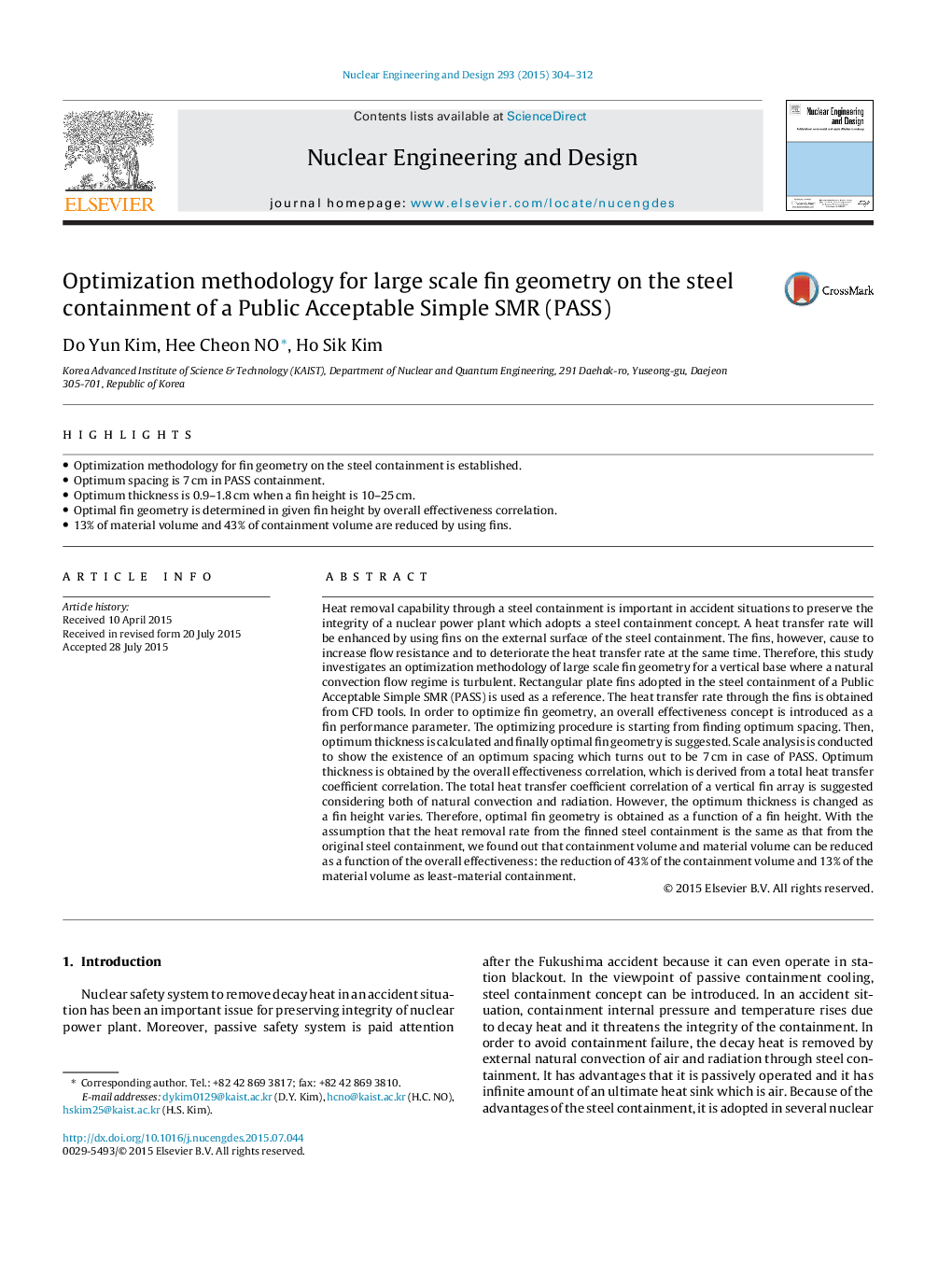| کد مقاله | کد نشریه | سال انتشار | مقاله انگلیسی | نسخه تمام متن |
|---|---|---|---|---|
| 6760793 | 511705 | 2015 | 9 صفحه PDF | دانلود رایگان |
عنوان انگلیسی مقاله ISI
Optimization methodology for large scale fin geometry on the steel containment of a Public Acceptable Simple SMR (PASS)
دانلود مقاله + سفارش ترجمه
دانلود مقاله ISI انگلیسی
رایگان برای ایرانیان
موضوعات مرتبط
مهندسی و علوم پایه
مهندسی انرژی
مهندسی انرژی و فناوری های برق
پیش نمایش صفحه اول مقاله

چکیده انگلیسی
Heat removal capability through a steel containment is important in accident situations to preserve the integrity of a nuclear power plant which adopts a steel containment concept. A heat transfer rate will be enhanced by using fins on the external surface of the steel containment. The fins, however, cause to increase flow resistance and to deteriorate the heat transfer rate at the same time. Therefore, this study investigates an optimization methodology of large scale fin geometry for a vertical base where a natural convection flow regime is turbulent. Rectangular plate fins adopted in the steel containment of a Public Acceptable Simple SMR (PASS) is used as a reference. The heat transfer rate through the fins is obtained from CFD tools. In order to optimize fin geometry, an overall effectiveness concept is introduced as a fin performance parameter. The optimizing procedure is starting from finding optimum spacing. Then, optimum thickness is calculated and finally optimal fin geometry is suggested. Scale analysis is conducted to show the existence of an optimum spacing which turns out to be 7Â cm in case of PASS. Optimum thickness is obtained by the overall effectiveness correlation, which is derived from a total heat transfer coefficient correlation. The total heat transfer coefficient correlation of a vertical fin array is suggested considering both of natural convection and radiation. However, the optimum thickness is changed as a fin height varies. Therefore, optimal fin geometry is obtained as a function of a fin height. With the assumption that the heat removal rate from the finned steel containment is the same as that from the original steel containment, we found out that containment volume and material volume can be reduced as a function of the overall effectiveness: the reduction of 43% of the containment volume and 13% of the material volume as least-material containment.
ناشر
Database: Elsevier - ScienceDirect (ساینس دایرکت)
Journal: Nuclear Engineering and Design - Volume 293, November 2015, Pages 304-312
Journal: Nuclear Engineering and Design - Volume 293, November 2015, Pages 304-312
نویسندگان
Do Yun Kim, Hee Cheon NO, Ho Sik Kim,